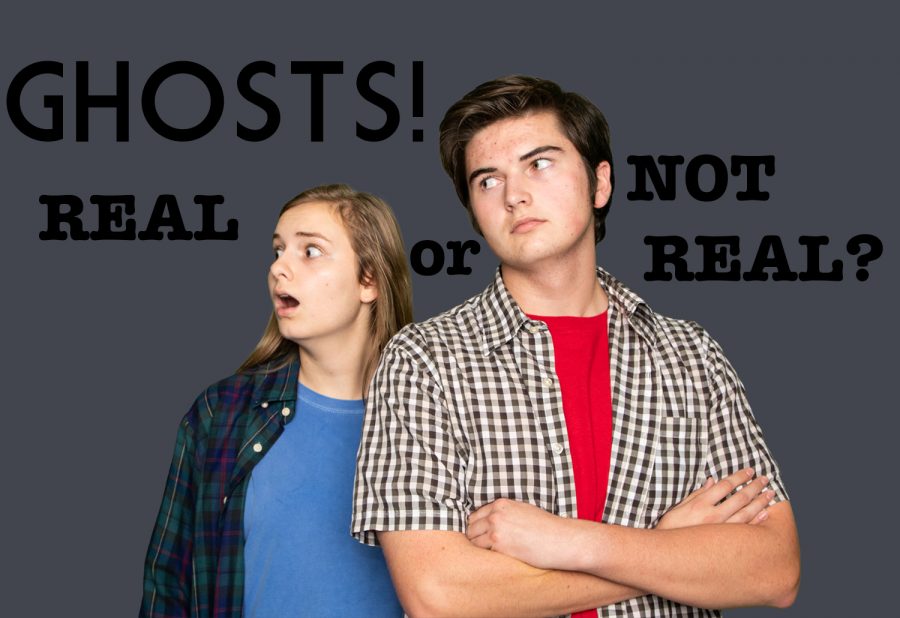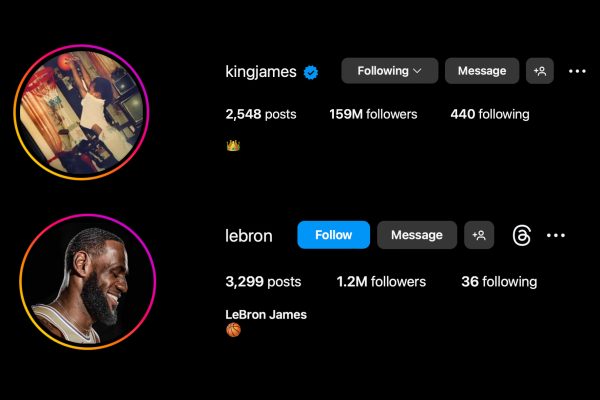Ghostbusters?
Debate continue over existence of ghosts
October 31, 2018
There has been a moment in almost everyone’s life where they find themselves with a chill up their spine, a shadow through the window, or a gust of cold air that seemed to be unexplained. Some will say it is a ghost, some will say it is just a coincidence. Do you trust your eyes or do you trust science?
GHOSTS ARE REAL:
A piece of American culture so popular and iconic that masses crowd around dank prisons and dingy asylums with dark pasts to catch a glimpse of an apparition they may or may not encounter, a piece of culture so inspiring it created its own genre of film and television and writing, a piece of culture so impactful there are an estimated 2,000 groups across the United States that have dedicated their lives to perfecting the art and science behind proving its existence once and for all. The infamous presence of ghosts has yet to be officially proven, similar to the once contested theory of the planets revolving around the sun, but a lack of official proof does not mean lack of existence.
Nearly every culture has some manifestation of a spirit from the bodies of the dead remaining on Earth. Mexican cultures celebrate the Day of the Dead, in which spirits of passed on ancestors return to spend time with loved ones. The Chinese Community in Malaysia celebrates the Hungry Ghost Festival on the 15th day of the Chinese Lunar Calendar, a time when it’s believed the portal between worlds is opened and they return for appeasement and entertainment. Celts in the Middle Ages celebrated Halloween with different rituals to protect themselves from roaming spirits. How could this same phenomena be shared across cultural boundaries and not have at least some truth to it?
Ghosts know no time, as some of the most famous sightings include those of Anne Boleyn, Al Capone and Marilyn Monroe. However, even those who don’t see Monroe in the Roosevelt Hotel, or Capone in his cell at the Eastern State Penitentiary, still have experiences with supernatural beings. In fact, in a poll of 2,000 people, 60% claimed to have seen a ghost.
According to a YouGov poll of 1,000 adults, 45% of Americans believe in ghosts, a majority compared to 32% who don’t believe. Meanwhile, nearly a third of those surveyed claimed to have encountered a ghost.
Much of the proof in favor of the supernatural comes from personal experiences, however scientific devices like EMF (electromagnetic field) readers offer a logical argument. EMF devices work by measuring the electromagnetic levels of an area, and research has found that places said to be haunted typically have a higher EMF.
According to the theory of Dr. Michael Persinger, high EMF ratings can cause delusions that lead people to believe they’ve seen ghosts, however, it cannot be coincidental that areas of alleged hauntings have high EMF readings. The “hallucinations” people experience could very likely be real apparitions, and it’s important to keep in mind that Persinger’s work is just theory.
EVP (electronic voice phenomena) also poses a strong argument in the ghastly realm. Devices like spirit boxes, such as the one sold by P-SB7, work by allowing ghosts to use their energy and communicate through the white noise produced between alternating FM and AM radio stations. The boxes change frequencies so fast that the odds of an EVP occurring unintentionally is highly unlikely, meaning that anything communicating through the box is real and has a purpose. The boxes allow the ghosts to use their energy to speak to us, and there have been many audio recordings and videos that have captured EVPs through spirit boxes in action.
The word “ghost” also has many different definitions, as some say they’re the remaining spirits of dead loved ones and others say they’re more like demonic entities, either way, science and eyewitnesses have proved them real.
GHOSTS ARE NOT REAL:
Do we still live in the past? Has superstition still not yet left the realm of fact? Humans have advanced beyond superstition. We have been from the depths of the ocean to the lengths of the globe to even the moon. We can explain natural phenomena with science. Tornadoes occur because warm, moist air meets cool, dry air, not because the sky god got mad. People see stars in the sky, not spirits of lost relatives. When you have an unlucky break, you’re just unlucky, not because you’re being haunted by the spirits of natives who were buried under your house. We live in the present; we expect proof, not personal beliefs.
Despite many cultures adopting ghost stories, this cannot be proof for ghosts. Through the spreading of ideas in a people over an extended period of time, culture develops. Although some cultures may come to similar conclusions in their culture or discoveries about the world, that does not give these conclusions any validity. A widespread belief is not a true one. At one point in time, multiple cultures attributed disease to gods taking out their anger. At one point in time, people thought that the Earth was flat. At one point in time, every culture has degraded women to little more than property. These were all common beliefs amongst many populations, but that does not add to their credibility. These ideas have been reviewed and deemed as false, so why would a commonly-held belief like ghosts be given any more thought just because it has derived from multiple cultures.
Some say that they can forget a name, but never a face. This is the case with our brains. When we dream, we can dream of many different people, but only people we have seen before. This could explain why many people say they see the same historical figures as ghosts. They could’ve been drowsy or maybe dreamt the whole experience. Dreams are elusive, so any ghosts sightings that could have been affected by dreams should be disregarded.
People claim that they have seen ghosts in many places. However, this may be attributed to pareidolia, which describes the recognizing of patterns when there are no patterns, specifically when we see faces in our environment. In a study, participants were shown pure-noise images and were told that half of these images contained a face. They reported seeing faces or letters 34 percent and 38 percent of the time, respectively. When we see something in the dark, we can jump to the conclusion that it is a person or an apparition. Clearly, our brains are jumping at shadows. If humans can recognize something where there is nothing, then the ghost argument is in jeopardy.
Ever since our science class in middle school, we are told that life cannot exist without cells. Yet, to claim that ghosts exist is to deny this fundamental fact. If they are not made out of cells, then how can they live? They can’t.
It is hard to prove the existence of ghosts because it cannot be done. Any personal witness could be lying, any footage can be altered and any natural phenomenon can be explained. Gathering evidence to prove that ghosts are real is useless if the evidence is rare or has doubt surrounding it. Although seeing your deceased grandfather as a ghostly figure in the kitchen at night is an interesting thought, it is just that- a thought.





















